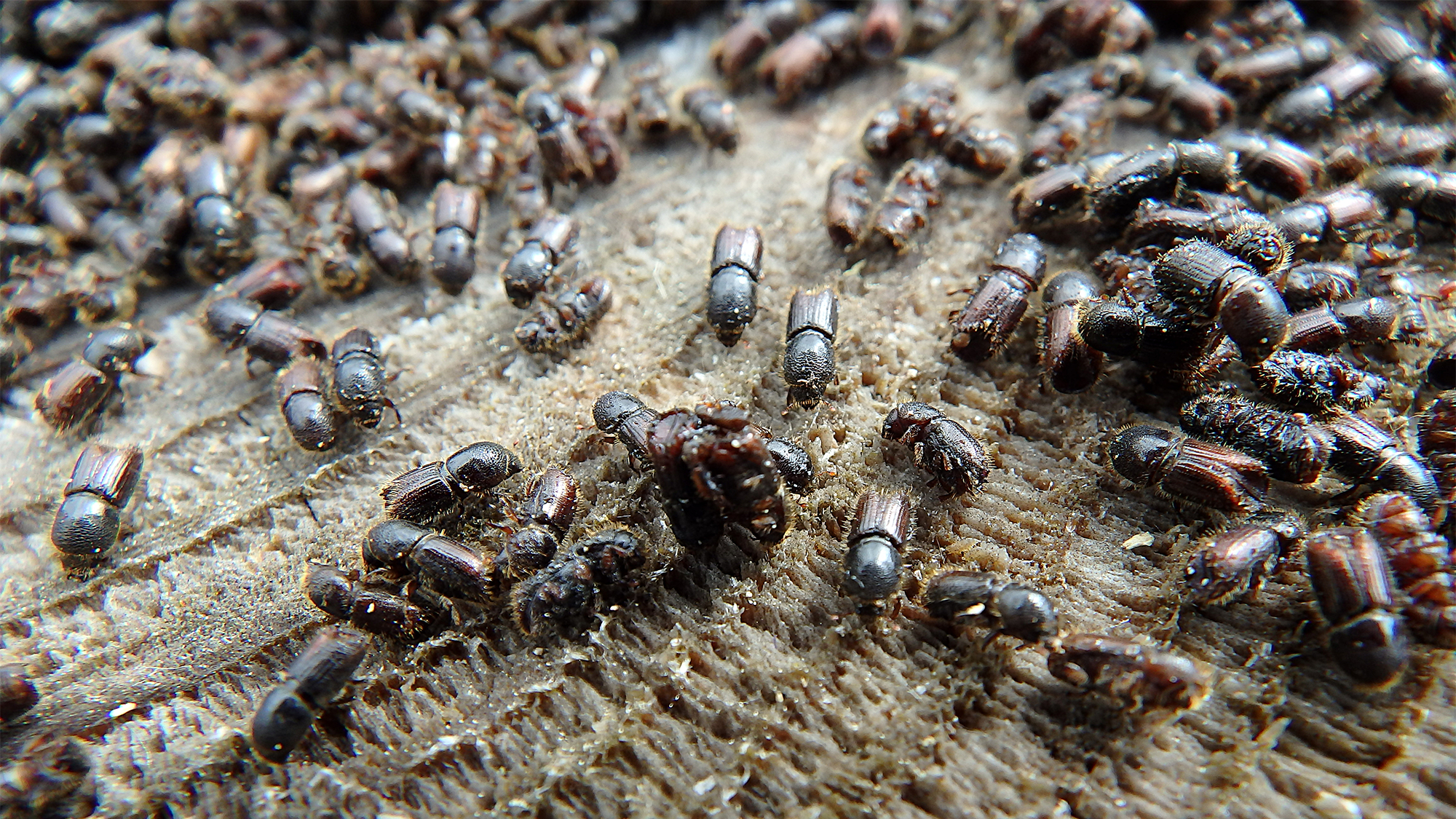

Conifer forests across Europe are under siege from a tiny threat with a gigantic impact. Abnormally high temperatures and summer droughts have helped populations of the Eurasian spruce bark beetles (Ips typographus) soar, eventually killing the trees. Forest management entities are rushing to fix the problem. In July 2022, the United Kingdom’s Forestry Commission began a new management program to handle outbreaks of beetles and to combat future spread, particularly in southwestern England. Germany alone has lost half a million hectares of forests since 2018, with spruce tree species being hit particularly hard by the species, also called the European bark beetle.
[Related: Mother dung beetles are digging deeper nests to escape climate change.]
These small beetles burrow into the bark of Norway spruce trees, and once inside, they mate and lay their eggs. They also seem to preferentially attack the spruce trees that are already infected with a symbiotic fungus, such as Grosmannia penicillata, which is believed to weaken trees and break down their chemical defenses. This allows the beetles to successfully reproduce within the bark.
In a study published February 21 in the journal PLoS Biology, a team investigated the chemical signals that the insects use to identify host trees that are infected with the fungus. The team performed experiments in a lab on captive bark beetles and samples of Norway spruce bark.
The experiments found that the fungus breaks down monoterpenes–chemicals present in tree bark resin–into new compounds, including camphor and thujanol. They also found that the fungus-produced compounds dominated the chemical mixture emitted by the bark samples after 12 days of infection.

Additionally, single cell recordings of sensory neurons in the beetles’ antennae revealed that the bugs can detect camphor and thujanol. Behavioral experiments found that the bark beetles were attracted to the bark that had these fungus-produced compounds. The compounds may allow bark beetles to assess the presence of the fungus and find trees that are suitable to eat and breed in.
[Related: The government is raising an army of parasitic wasps to fight invasive beetles.]
According to the study authors, understanding the role that these chemical compounds play in bark beetle attacks could help create better pest-management strategies and protect European conifers from future epidemic outbreaks.
“The bark beetles currently killing millions of spruce trees every year in Europe are supported in their attacks by fungal associates,” said study co-author Jonathan Gershenzon, a biochemist from the Max Planck Institute for Chemical Ecology, Germany, in a statement. “We discovered that these fungi convert volatile compounds from spruce resin to products, which may serve as cues for bark beetles to find them.”
